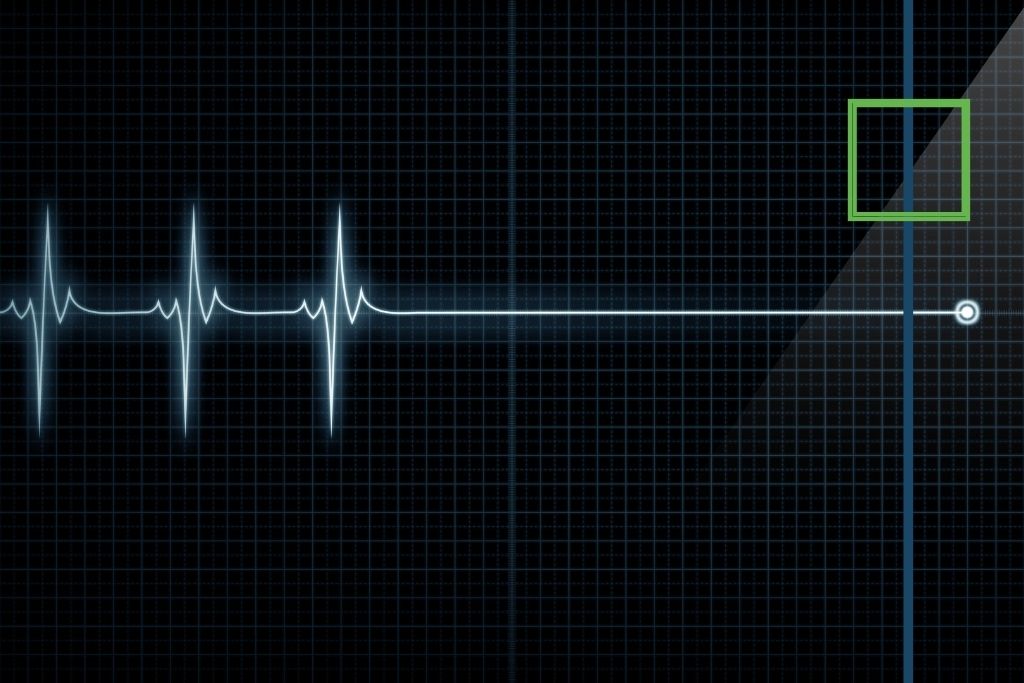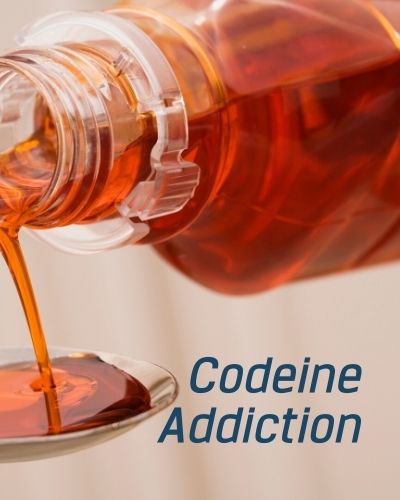Opiates vs Opioids — What’s the Difference?
Some people carefully differentiate between these two groups of narcotic drugs when they talk about them. Other people use the terms opiates and opioids interchangeably or prefer one over the other. Our language is evolving; lately, many people, especially politicians and journalists, including most government websites, are favoring to refer to all of these drugs as “opioids.”
Both opioids and opiates are used medically. They may be prescribed for anesthesia, pain relief, cough suppression, diarrhea suppression, and for treatment of opiate/opioid use disorder. According to the National Institute of Health (NIH) [1], in 2018 in the United States, about 808,000 people reported using heroin during the past year. In the same year, about 11.4 million people used narcotic pain relievers without a prescription.
According to the Center for Disease Control and Prevention (CDC) [2], although these terms are often used interchangeably, they are different:

Opiates
Opiates refer to natural opioids such as heroin, morphine, and codeine. Opiates are chemical compounds that are refined or extracted from natural plant matter (poppy sap and fibers).
Codeine
Codeine is a prescription pain medication used to relieve mild to moderate pain and coughing, Tylenol 3, a popular Painkiller, is Codeine combined with Acetaminophen. Unfortunately, people prescribed Codeine from their doctors may soon find they’ve developed a Codeine addiction.
It is easily obtained with a prescription and is present in some over-the-counter medicines. Codeine is often combined with sugary drinks to create a mixture called “Purple Drank” or “Sizzurp.” Street names for Codeine include Cough Syrup, Schoolboy, Coties, and T-threes.
Morphine
According to the National Institute of Health (NIH), morphine relieves moderate to severe pain. Morphine is in a class of medications called opiate (narcotic) analgesics. It works by changing the way the brain and nervous system respond to pain. The drug can be taken in the form of a tablet, syrup, or injection.
In some cases, Morphine can even be smoked. Unfortunately, this drug has a high potential for abuse because of its pleasurable effects and relative accessibility. Common street or slang names for Morphine include M, Miss Emma, Monkey, Roxanol, and White Stuff.

Get Your Life Back
Find Hope & Recovery. Get Safe Comfortable Detox, Addiction Rehab & Mental Health Dual Diagnosis High-Quality Care at the We Level Up Treatment Centers Network.
Hotline (877) 378-4154Heroin
Heroin is an illegal, highly addictive opioid drug processed from morphine and extracted from certain poppy plants. It is an opiate with a powerful effect on the brain’s reward system. The intensity of this effect is a reason why Heroin addiction and abuse can be so widespread. Not all Heroin looks the same. It comes in several different forms and can be abused in several different ways, including snorting, smoking, and injecting.
- Fine white powder – This is the purest form of Heroin.
- Brown or black powder – This form of Heroin gets its color from additives and is more common than pure Heroin.
- Black tar Heroin – This form of Heroin comes as a black, sticky gel.
Opioids
Opioids refer to all-natural, semisynthetic, and synthetic opioids. This class of drugs includes the illegal drug heroin, synthetic opioids such as fentanyl, and pain medications available legally by prescription, such as oxycodone, hydrocodone, codeine, morphine, and many others.
Opioids are chemical compounds that generally are not derived from natural plant matter. Opioids are synthetically manufactured substances that copy the natural effects of Opium. Some Opioids are fully Synthetic, while others are only partially Synthetic — meaning they still contain natural Opium. Most opioids are “synthesized” or “made in the lab.”
Examples of well-known opioids used medically in the U.S [3].:
- Dextromethorphan (available in the U.S. without prescription such as, NyQuil, Robitussin, TheraFlu, Vicks)
- Dextropropoxyphene (Darvocet-N, Darvon)
- Loperamide (Imodium)
- Hydrocodone (Vicodin)
- Oxycodone (Oxycontin, Percocet)
- Oxymorphone (Opana)
- Meperidine (Demerol)
- Methadone (Dolophine)
- Fentanyl/fentanil (Ultiva, Sublimaze, Duragesic patch)
- Carfentanyl/carfentanil (Wildnil, for veterinary use)
Both groups of drugs are “narcotics.” (The word “narcotic” simply means numbness-inducing or sleep-inducing (from the Medieval Latin narcoticus, from the Greek narkoun “to be numb.”)
It’s most precise to refer to both groups of narcotic drugs as “opiates and opioids,” the naturally derived and the synthetic. However, currently, when people wish to refer to all of these drugs, they often use the term “opioid.”
They may be different in such as way that one is naturally derived and the other is synthetic, but both work by activating receptors in the brain and depressing the central nervous system (brain and spinal cord). When receptors become activated by one of these drugs, they release a feel-good chemical known as endorphins. The release of endorphins caused by Opioid or Opiate use leads to feelings of calmness and relaxation, which can be highly addicting.
Get Help. Get Better. Get Your Life Back.
Searching for Accredited Drug & Alcohol Rehab Centers Near You? Or Mental Health Support?
Even if you have failed previously, relapsed, or are in a difficult crisis, we stand ready to support you. Our trusted behavioral health specialists will not give up on you. Call us when you feel ready or want someone to speak to about therapy alternatives to change your life. Even if we cannot assist you, we will lead you wherever you can get support. There is no obligation. Call our hotline today.
FREE Addiction Hotline – Call 24/7What are Opiates?
Opiates belong to the large biosynthetic (natural) group of benzylisoquinoline alkaloids and are so named because they are naturally-occurring alkaloids found in the opium poppy.
The major psychoactive opiates are morphine, codeine, and thebaine. Papaverine, noscapine, and approximately 24 other alkaloids are also present in opium but have little to no effect on the human central nervous system, and as such are not considered to be opiates [4].
Semi-synthetic opioids such as hydrocodone, hydromorphone, oxycodone, and oxymorphone, while derived from opiates, are not opiates themselves, but are considered as opioids.
While the full synthesis of opiates from naphthoquinone (Gates synthesis) or from other simple organic starting materials is possible, they are tedious and uneconomical processes.
Therefore, most of the opiate-type analgesics in use today are either directly extracted from Papaver somniferum or synthesized from the natural opiates, mainly from thebaine.
What Causes Opiate Withdrawal?
If someone is dependent on, or addicted to, one particular opiate or opioid drug, whether it’s illicitly obtained, or medically prescribed, they may find that switching to a different opioid or opiate can help maintain their dependency or addiction. That is, substituting one opiate or opioid for another may help prevent withdrawal symptoms.
Most of us have heard stories of individuals with real, actual pain who became dependent on prescription pain-relieving narcotic drugs, then switched to illicit opioids or the opiate heroin when the medically supplied narcotics ran out.

When you take opiates such as heroin, morphine, or codeine for a long time, your body becomes desensitized to the effects. As a result, your body needs more and more of the drug to achieve the same effect over time. This can be very dangerous and increases your risk of accidental overdose.
Prolonged use of these drugs changes the way nerve receptors work in your brain, and these receptors become dependent upon the drug to function. If you become physically sick after you stop taking opiates, it may indicate that you’re physically dependent on the substance. Opiate withdrawal symptoms are the body’s physical response to the absence of the drug.
Many people become dependent on opiates to avoid pain or opiate withdrawal symptoms. Unfortunately, in some instances, individuals don’t even realize that they’ve become dependent. Instead, they may mistake opiate withdrawal for symptoms of the flu or another condition.
Opiate withdrawal symptoms are linked to the sudden stop or reduction of continued opiate usage. In medical facilities such as clinics and hospitals, the threat of relapse is possible when Post-acute withdrawal syndrome is under-emphasized to someone in transitional phases.
First-class Facilities & Amenities
World-class High-Quality Addiction & Mental Health Rehabilitation Treatment
Rehab Centers TourRenowned Addiction Centers. Serene Private Facilities. Inpatient rehab programs vary.
Addiction Helpline (877) 378-4154Proven recovery success experience, backed by a Team w/ History of:
15+
Years of Unified Experience
100s
5-Star Reviews Across Our Centers
10K
Recovery Success Stories Across Our Network
- Low Patient to Therapist Ratio
- Onsite Medical Detox Center
- Comprehensive Dual-Diagnosis Treatment
- Complimentary Family & Alumni Programs
- Coaching, Recovery & Personal Development Events
Opiate Withdrawal Symptoms and Timeline
The opiate symptoms will depend on the level of opiate withdrawal you are experiencing. Also, several factors dictate how long someone will experience opiate withdrawal symptoms. Because of this, everyone experiences opiate withdrawal differently. However, there’s typically a timeline for the progression of symptoms.
Early opiate withdrawal symptoms typically begin in the first 24 hours after the user stop taking the drug, and they include:
- Muscle aches
- Restlessness
- Anxiety
- Lacrimation (eyes tearing up)
- Runny nose
- Excessive sweating
- Inability to sleep
- Yawning very often
Later symptoms, which can be more intense, begin after the first day or so. They include:
- Diarrhea
- Abdominal cramping
- Goose bumps on the skin
- Nausea and vomiting
- Dilated pupils and possibly blurry vision
- Rapid heartbeat
- High blood pressure
Although painful and very unpleasant, opiate withdrawal symptoms usually start to improve within 72 hours, and within a week you should notice a significant decrease in the acute symptoms of opiate withdrawal.
Infants born to mothers who are addicted to or have used opiates while pregnant often experience withdrawal symptoms as well. These may include:
- Digestive issues
- Poor feeding
- Dehydration
- Vomiting
- Seizures
It’s essential to remember that different drugs remain in users’ systems for different lengths of time, affecting opiate withdrawal onset. The amount of time the symptoms last depends on the frequency of use and severity of the addiction and individual factors like overall health.
For instance, heroin is typically eliminated from the system faster, and opiate withdrawal symptoms will start within 12 hours of last use. On the other hand, if a person is on methadone, it may take a day and a half for opiate withdrawal symptoms to begin.
Some specialists point out that opiate addiction recovery requires a period of at least six months of total abstinence, during which the individual may still experience symptoms of opiate withdrawal. This is sometimes referred to as “protracted abstinence.”
World-class, Accredited, 5-Star Reviewed, Effective Addiction & Mental Health Programs. Complete Behavioral Health Inpatient Rehab, Detox plus Co-occuring Disorders Therapy.
CALL (877) 378-4154End the Addiction Pain. End the Emotional Rollercoaster. Get Your Life Back. Start Drug, Alcohol & Dual Diagnosis Mental Health Treatment Now. Get Free No-obligation Guidance by Substance Abuse Specialists Who Understand Addiction & Mental Health Recovery & Know How to Help.
Opiate Addiction Treatment
Heroin, hydrocodone, fentanyl, oxycodone, and Dilaudid are just a handful of the substances that fall into the opiate and opioid categories. These drugs are all highly addictive. In fact, there are approximately 2.1 million Americans that have opiate and opioid use disorder. Unfortunately, due to the highly addictive nature of these drugs, recovery rates from opiate and opioid addiction are low.
Overdose rates have been rising over the past couple of decades. To reduce overdose rates and help those struggling with opiate addiction, a few different pharmaceutical medications have been developed and approved by the FDA. Two of the most common medications used for opioid-related treatment include Methadone and Suboxone.
Both Suboxone and Methadone are Schedule II controlled substances. When used they carry a risk of withdrawal and a high potential for abuse. When starting these medications, their dosage administration is closely controlled and monitored. In many cases, the medical professional administering the medication will require that the patient is only given it at their facility and they will even observe the patient take the medication. Over time, the individual may be given a few doses at a time to administer themselves.
Medications such as methadone and Suboxone can be used to manage withdrawal and cravings, but treatment for opioid use varies from one individual to another. As a part of a holistic treatment approach, medication use should be paired with continuing treatment programming, therapy, and counseling.
Find the Right Treatment Plan
A trained addiction treatment professional is the best place to start in developing a treatment plan to manage opiate withdrawal symptoms. They can evaluate your needs to determine if Suboxone or methadone is a good medically assisted treatment option and develop a schedule for group therapy, individual therapy, and possibly alternative therapies. Get started on the road to recovery at We Level Up NJ.

Experience Transformative Recovery at the We Level Up Treatment Center.
See our authentic success stories. Get inspired. Get the help you deserve.



Start a New Life
Begin with a free call to an addiction & behavioral health treatment advisor. Learn more about our dual-diagnosis programs. The We Level Up treatment center network delivers various recovery programs at each treatment facility. Call to learn more.
- Personalized Care
- Caring Accountable Staff
- World-class Amenities
- Licensed & Accredited
- Renowned w/ 5-Star Reviews
We’ll Call You
Sources:
[1] NIH – https://medlineplus.gov/ency/article/000949.htm
[2] Alcohol and Drug Policy Commission – https://www.oregon.gov/adpc/pages/opiate-opioid.aspx
[3] CDC – https://www.cdc.gov/opioids/basics/terms.html
[4] Alaska State Legislature – http://www.akleg.gov/basis/get_documents.asp?session=28&docid=417
[5] We Level Up – Heroin Detox